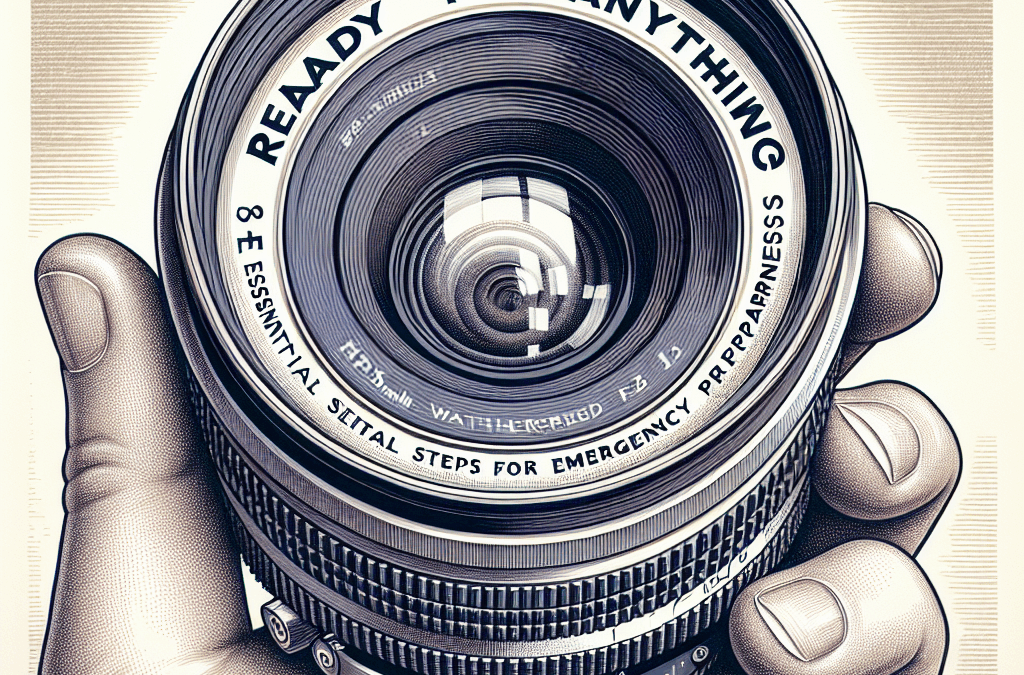Emergencies can strike at any moment, transforming the ordinary into chaos. Whether it’s a natural disaster, medical emergency, or unexpected crisis, being prepared is your best defense. Here’s a comprehensive guide to help you navigate the essential steps of emergency preparedness.
*Understanding Your Risks: Assessing Potential Emergencies in Your Area**
The first step in preparing for emergencies is understanding the specific risks associated with your location. Are you living in a flood zone? Is your region prone to wildfires, earthquakes, or hurricanes? Start by researching local hazards and consider historical data regarding past incidents. Many communities provide resources online to help residents gauge their vulnerabilities.
Next, think about personal risks as well—do you have elderly family members or pets that require special attention during a crisis? Identifying these factors will empower you to craft effective strategies tailored to your circumstances. Knowledge is power; with it, you can anticipate potential threats and respond proactively.
*Building Your Emergency Kit: Essential Supplies for Any Situation**
An emergency kit is a lifeline when disaster strikes. Start by gathering supplies that cater to various scenarios—think versatility! Basic items should include non-perishable food, bottled water (at least one gallon per person per day), flashlights, batteries, first aid supplies, personal hygiene items, and important documents like identification and insurance papers.
Consider adding specialized equipment depending on your family’s needs; this might involve medications for chronic conditions or baby supplies if there are young children involved. Don’t forget about entertainment options—a good book or deck of cards can keep spirits high during prolonged situations. Regularly check your kit’s contents every six months to ensure everything remains up-to-date and functional.
*Creating a Family Emergency Plan: Communication and Safety Strategies**
A robust plan serves as a roadmap during an emergency—without it, confusion can reign supreme. Sit down with your family to discuss potential scenarios and outline how everyone should respond. Designate meeting places both near home and outside your neighborhood so everyone knows where to go if separated.
Thank you for reading this post, don't forget to subscribe NOW for FREE!
Communication is critical; make sure each member has access to emergency contact numbers stored in their phones or written down somewhere accessible. Discuss how you’ll stay informed through alerts from local authorities or weather apps as situations evolve.
Practicing drills fosters preparedness too—consider conducting fire drills or earthquake simulations regularly so everyone knows what steps to take when the real thing happens. The more familiar they become with procedures, the less panic they’ll experience when faced with actual emergencies.
*Staying Informed: The Importance of Training and Resources**
Education plays an indispensable role in effective emergency preparedness. Invest time in training sessions on first aid and CPR; these skills can save lives when every second counts. Many organizations offer classes tailored for families—or even free resources through community centers.
Moreover, utilize technology wisely. Follow trusted sources on social media for real-time updates concerning emergencies in your area—this includes local government agencies and weather channels that provide timely alerts.
In conclusion, being ready for anything involves understanding risks specific to your environment while assembling necessary supplies and creating structured plans with those closest to you. By remaining informed through education and reliable resources, you’ll cultivate resilience within yourself and foster confidence among loved ones—all crucial elements when facing life’s unpredictable challenges head-on!






